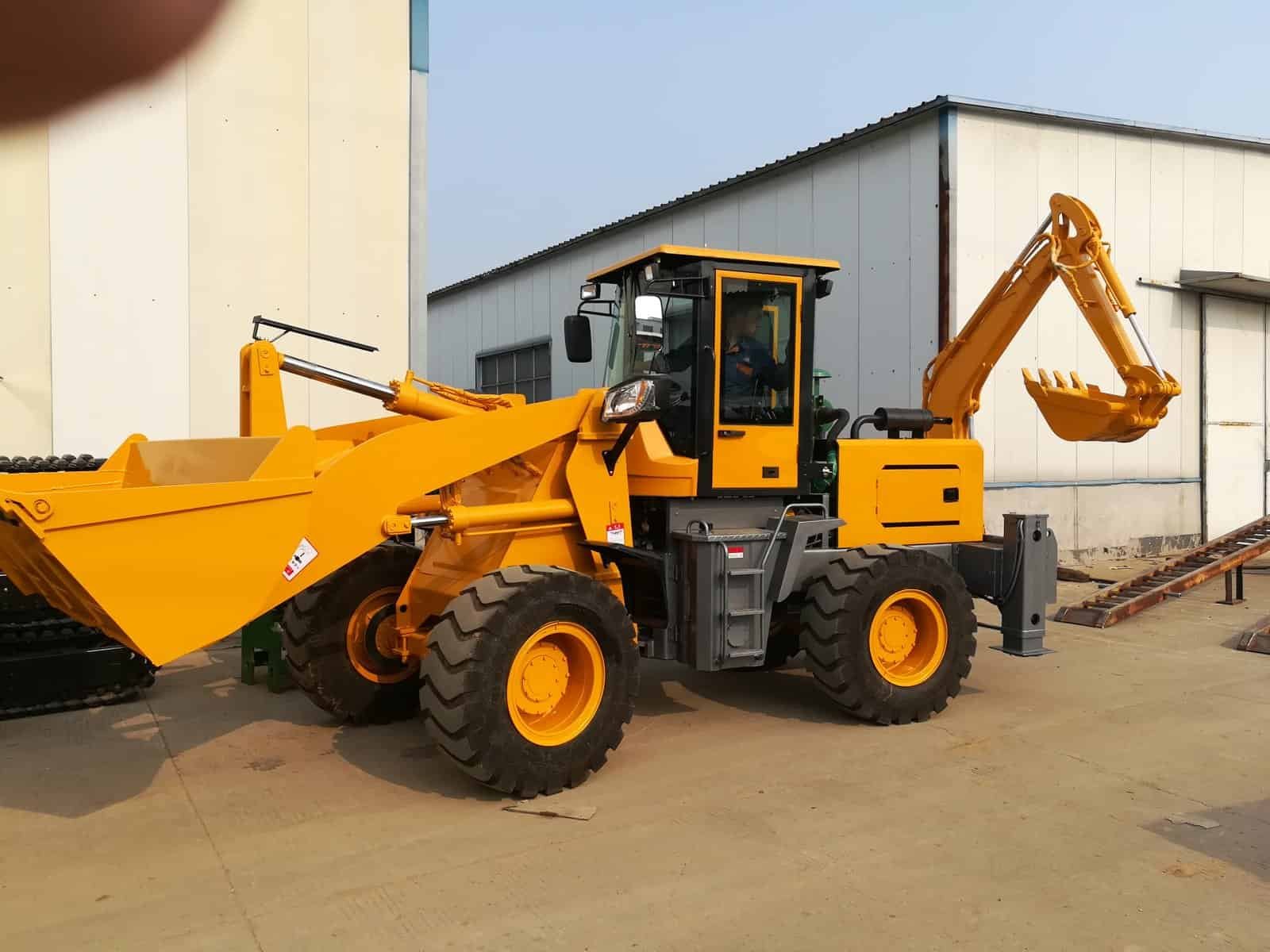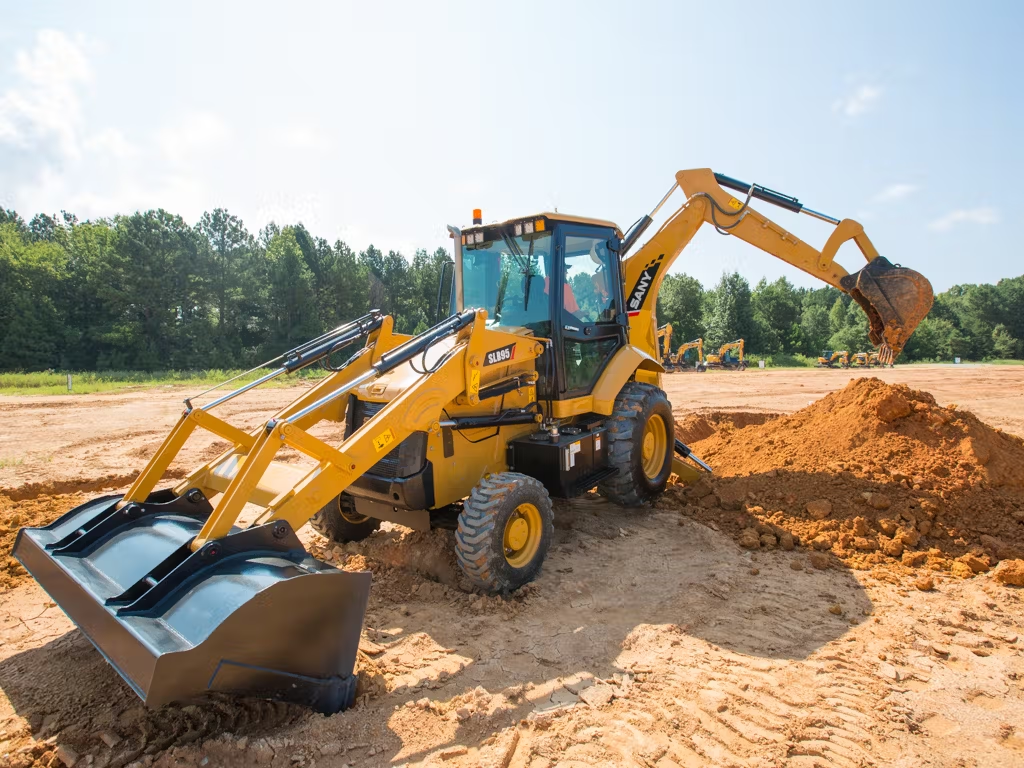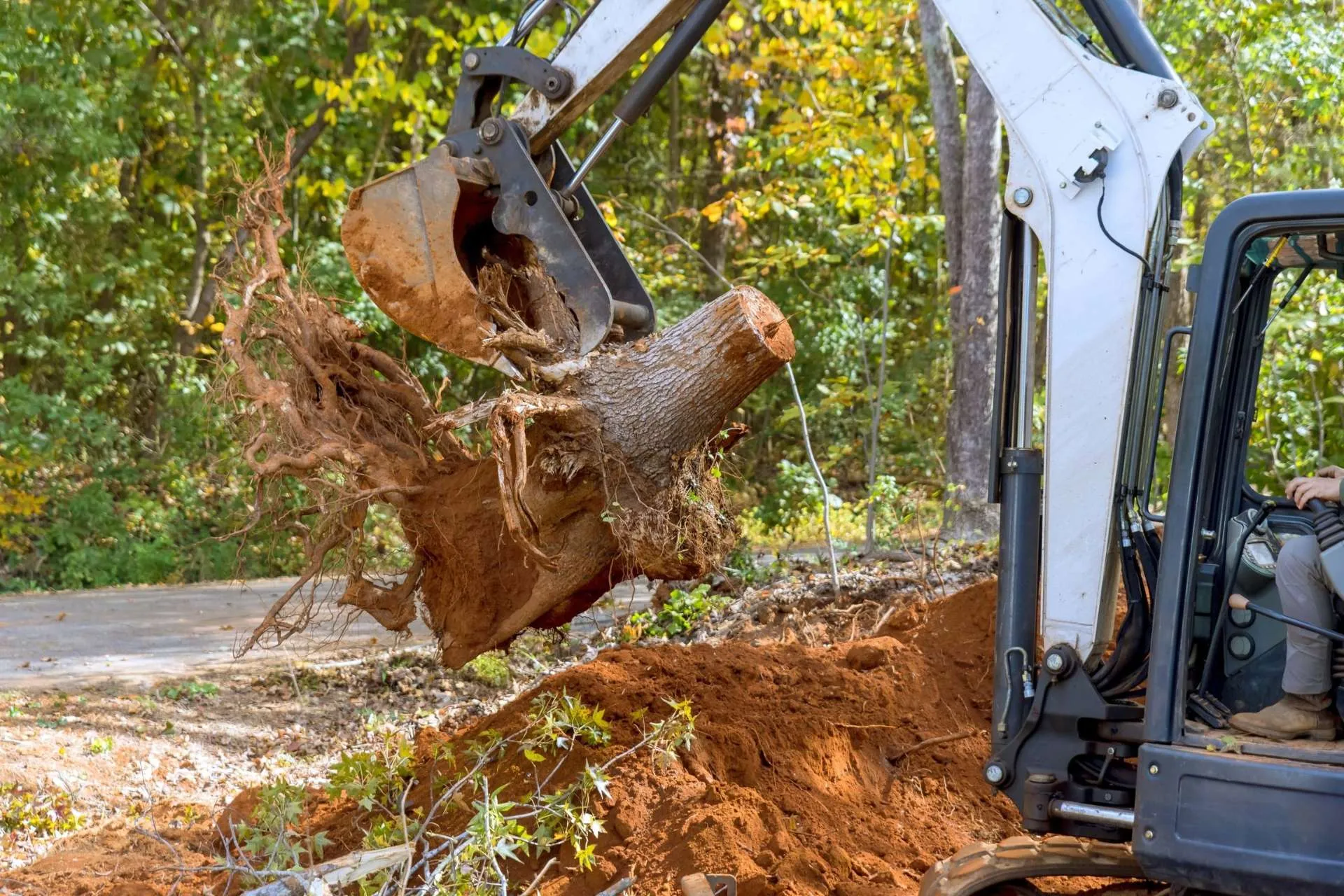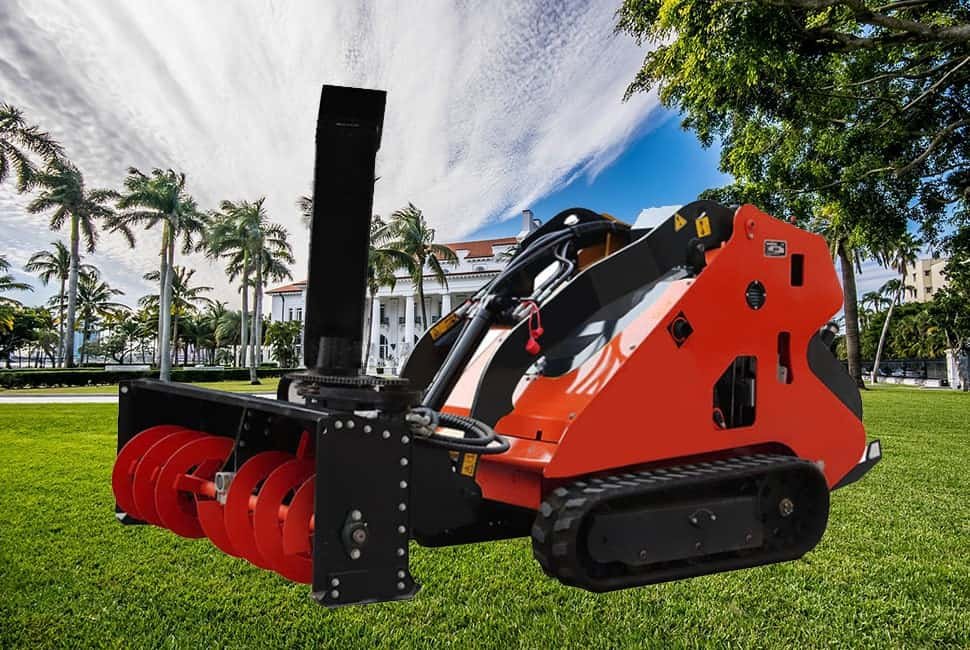Are you dealing with a small-scale digging task or a large, complex earth-moving project? Choosing the right equipment can make all the difference in efficiency and cost.
Backhoe vs excavator serve different purposes in construction, each with its unique advantages. Understanding their key differences helps you make the best choice for your project.
Let’s dive deeper into the key differences between a backhoe and an excavator to help you decide which one is right for your needs.
What is a Backhoe?
A backhoe is a versatile piece of machinery commonly mounted on a wheeled or tracked vehicle. It features a front bucket for loading and a rear boom with an excavator arm for digging.
Backhoes are best suited for smaller-scale digging tasks, such as trenching and small excavation projects. Their compact design makes them ideal for confined spaces.
Backhoes are widely used in construction for foundation work, landscaping, and small earth-moving projects. They can also be used for loading and material handling. Their ability to perform multiple tasks with a single machine makes them an excellent choice for smaller projects where space and cost are constraints. The backhoe’s rear arm is designed for digging, while the front bucket is perfect for loading material, making it an efficient choice for construction sites with limited space.

What is an Excavator?
Excavators are heavy-duty machines designed for large-scale earth-moving tasks. They come with a powerful boom and a large bucket for deep digging and material handling.
Excavators are typically used in large construction and mining projects. Their robust build allows them to perform deep excavation, demolition, and lifting operations.
Excavators are indispensable in industries that require heavy lifting and large-scale earthworks, such as mining, demolition, and large construction projects. Their hydraulic systems offer significant digging force, allowing them to reach deeper depths and move larger amounts of material compared to backhoes. Excavators are also highly efficient in tasks like trenching, digging foundations, and even dredging, making them ideal for expansive and complex operations. They come in various sizes, from mini-excavators for compact jobs to large, industrial-sized models for massive earth-moving tasks.

Key Differences Between Backhoe and Excavator
At first glance, backhoes and excavators might appear quite similar, but a closer look reveals that their primary functions and capabilities are actually quite different.
The main distinctions between these two types of machinery lie in their size, design, and operational capacity. Backhoes are known for their versatility and compact size, which makes them suitable for a wide range of tasks. Excavators, on the other hand, are much larger and more powerful, excelling in large-scale digging and lifting tasks that require significant strength and precision.
One of the most significant differences between backhoes and excavators is the scale of work they can handle. Backhoes are typically used for lighter tasks such as trenching, digging small foundations, or landscaping. Their compact size and versatility make them ideal for working in tight spaces and for projects that require a high level of precision. Whether it’s digging a trench for utility lines or preparing a small foundation for a new building, a backhoe can get the job done efficiently and effectively.
Excavators, in contrast, are designed to tackle much larger and more demanding tasks. They are often used in mining, demolition, and large-scale excavation projects where deep digging and heavy lifting are required. Excavators can dig deeper and handle larger loads due to their powerful hydraulic systems and large buckets. This makes them ideal for challenging projects that require high lifting and digging power. For example, in a large-scale mining operation, an excavator can remove vast amounts of earth and rock, while in a demolition project, it can dismantle large structures with ease.
In summary, while backhoes and excavators may share some similarities in appearance, their functions and capabilities are tailored to different types of projects. Backhoes are versatile and compact, making them perfect for smaller, more precise tasks. Excavators, with their larger size and powerful systems, are built for heavy-duty, large-scale projects that demand significant digging and lifting power. Understanding these differences will help you choose the right machine for your specific construction needs.
Backhoe vs Excavator Controls
The control systems of backhoes and excavators are another key area where these machines differ significantly, which in turn affects their usability and efficiency on various construction tasks.
Backhoes are equipped with a relatively straightforward control system, which is designed for ease of use, especially when tackling smaller tasks. This simplicity means that operators can quickly get up to speed and perform basic operations such as digging and lifting with minimal training. The fewer control levers on a backhoe make it an ideal choice for projects that require precision but do not demand extensive digging depth or heavy lifting power. For instance, in a residential landscaping project where the goal is to dig a shallow trench for irrigation lines, a backhoe’s simple controls allow the operator to work efficiently and accurately.
Excavators, on the other hand, come with more advanced and complex control systems that are tailored to handle their larger scale of operations. These systems include a greater number of levers, joysticks, and sometimes even digital interfaces, which enable the operator to manage a wide range of movements. This includes boom extension, bucket rotation, and precise adjustments to digging depth and angle. The complexity of these controls allows for greater precision and versatility, which is essential for large-scale projects such as commercial construction sites or mining operations. For example, when excavating a deep foundation for a high-rise building, the advanced controls of an excavator allow the operator to manage the machine’s movements with pinpoint accuracy, ensuring that the excavation is done correctly and efficiently.

While the advanced controls of an excavator offer more functionality and precision, they also require a higher level of training and experience to operate effectively. Operators need to be familiar with the various controls and how they interact to achieve the desired results. This learning curve can be a consideration when choosing between a backhoe and an excavator for a particular project.
In summary, the control systems of backhoes and excavators are designed to meet different operational needs. Backhoes offer simplicity and ease of use, making them perfect for smaller, more straightforward tasks. Excavators, with their advanced controls, provide the precision and versatility needed for larger, more complex projects. Understanding these differences can help you select the right machine for your specific construction needs, ensuring optimal efficiency and productivity on the job.
Can a Backhoe Excavate?
Many people wonder if a backhoe can truly handle the tasks typically reserved for an excavator.
While a backhoe is capable of excavating, it lacks the digging depth and power of an excavator, making it less suitable for larger projects.

Backhoes can perform excavation tasks, but they are better suited for smaller-scale operations. Their digging depth is limited compared to excavators, which are designed to reach much deeper depths for large-scale earth-moving tasks. While backhoes are perfect for trenching, utility installation, and small foundation work, they aren’t equipped to handle larger projects like mining or deep excavation. If your project requires extensive digging or handling of large volumes of material, an excavator would be a more efficient choice.
Is a Backhoe Good for Clearing Land?
Backhoes are commonly used for land clearing, but are they the best tool for the job?
Backhoes are effective for clearing smaller areas with light vegetation, but larger land clearing projects might require the power of an excavator.
Backhoes excel at clearing small areas of land, removing bushes, shrubs, and small trees. They can easily dig up roots and small stumps, making them ideal for residential construction or landscaping projects. However, when it comes to clearing large tracts of land with thick vegetation or large tree stumps, an excavator is a better choice. Excavators can handle bigger stumps, deeper roots, and denser materials, making them more suited for large-scale land clearing projects.
Can a Backhoe Dig Out Stumps?
Clearing tree stumps is a common use for backhoes. But can they handle larger, more stubborn stumps?
Yes, a backhoe can dig out smaller stumps, but for larger or deeper stumps, an excavator’s greater digging capacity makes it more effective.

Backhoes are excellent for removing smaller stumps, particularly those that are not deeply rooted. Their rear bucket is capable of digging around and lifting out the stump, making them ideal for residential land clearing projects. However, for larger stumps that require deeper digging or tougher material handling, an excavator is a better option. Excavators have more powerful digging arms and can reach deeper, making it easier to remove larger or deeply rooted stumps.
Which One is More Cost-Effective?
Cost is often a major factor in deciding between a backhoe and an excavator for a project.
Backhoes are generally more cost-effective upfront, but their smaller capabilities may result in higher operational costs for larger tasks compared to excavators.
While backhoes are more affordable to purchase or rent than excavators, they may not be as cost-effective for larger jobs due to the need for multiple operations. A backhoe’s smaller digging capacity can result in more time and labor spent to complete a task, which can add to the overall cost. Excavators, while more expensive to rent or purchase, are designed for heavy-duty operations and can complete tasks more quickly and efficiently, which may ultimately save you money on larger projects. When choosing between the two, consider both the initial cost and the long-term operational efficiency.
Which One is Right for Your Project?
Ultimately, the choice between a backhoe and an excavator depends on the size and scope of your project.
For small to medium tasks, a backhoe may be the right fit, while an excavator is better suited for large, demanding earth-moving jobs.
When choosing between a backhoe and an excavator, consider the size and nature of your project. If you’re dealing with a confined space and need to perform tasks like trenching or landscaping, a backhoe will likely be more efficient and cost-effective. However, if you’re working on a large-scale construction site, mine, or land clearing project, an excavator’s ability to handle heavy digging and large-scale operations makes it the more practical option. Both machines offer great versatility within their respective applications, but selecting the right one is key to ensuring your project runs smoothly.
Summary:
Choosing between a Бэкшоу and an экскаватор comes down to the scale of your project. Assess your needs carefully, and select the machine that best suits the task at hand.


